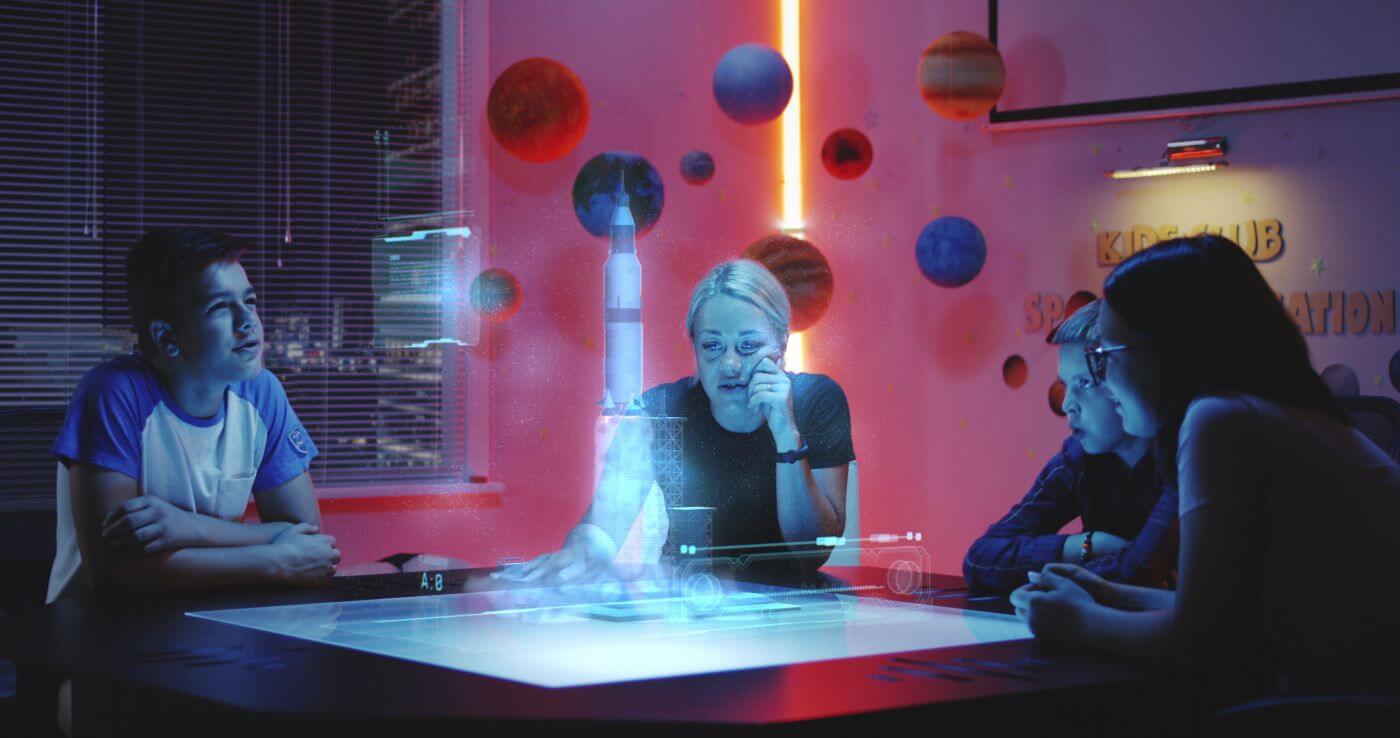In this insightful interview, we delve into the experiences of Brazilian university professors who have integrated Augmented Reality (AR) into their educational programs. These pioneers of immersive technologies share the challenges, successes, and lessons they’ve learned while using AR to enhance student learning and engagement. Through their stories, we discover how AR is transforming education and what the future may hold for this innovative tool.
Meet the Innovators
The group of educators leading this AR revolution includes:
- Ronan Corrêa Santos – Systems analyst and developer, postgraduate student in Educational Technologies and Online Education, and an AR developer.
- Romário Costa Ribeiro – Systems analyst, developer, and instructor at the State Institute of Education, Science, and Technology of Maranhão (IEMA). He is also a postgraduate student in Educational Robotics and Digital Technologies in Information and Communication in Education, specializing in AR.
- Andrey Marcos Mendonça Ferreira – Systems analyst and developer, instructor at IEMA, and postgraduate student in Digital Technologies in Information and Communication in Education, with expertise in AR.
These educators are committed to bringing innovation and technology to vulnerable communities, creating engaging and hands-on learning environments for students.
Discovering AR in Education
Ronan Santos shares how his journey with AR began. In late 2021, while searching for a topic for his final project in Systems Analysis and Development, he came across a mobile app called “Civilisations AR – BBC.” Inspired by this app, he decided to develop something similar, despite being unaware of AR technology at the time.
This led to the creation of “ManguApp,” an educational app aimed at teaching elementary school students about the fauna and flora of mangrove forests. During this process, Ronan explored various tools that enabled him to build immersive AR experiences. One such platform was MyWebAR, which stood out for its simplicity and impressive results. After graduating, Ronan continued his AR development work, creating training courses for students and teachers in Carutapera, Brazil. In 2023, he met Romário and Andrey, and together, they began promoting immersive technologies in classrooms.
Why Use AR in Education?
When asked about their motivation for integrating AR into educational programs, Ronan and his colleagues highlighted several key reasons:
- Engagement: Traditional educational methods often result in monotonous lessons. AR offers a dynamic and interactive way to teach complex concepts, capturing and maintaining student interest.
- Visualization: AR provides students with a better visualization of abstract ideas, allowing for more effective understanding of materials presented in the classroom.
- Localization: Many AR applications are in English, which can be a barrier for Brazilian students. Developing Brazilian-specific AR apps helps overcome this challenge and makes lessons more accessible.
AR’s potential to transform education was evident, and the enthusiasm of students for new technologies only fueled the professors’ commitment to using AR as an innovative teaching tool.
Projects Using AR and MyWebAR
The professors have been using AR and Virtual Reality (VR) in their classrooms for over two years. One of their favorite tools is MyWebAR, a platform that allows users to create AR experiences without extensive coding knowledge. Through workshops and courses, students and teachers alike explore the platform’s tools, creating their own AR content based on creativity, problem-solving, and computational thinking.
These workshops have been highly successful, with every session delivering impressive results. Participants not only learn how to use AR but also apply it to create immersive educational experiences, fostering a deeper understanding of the material.
The Results: Enhanced Learning and Engagement
The use of AR in their educational programs has exceeded expectations. Students quickly engage with the content and explore creative ways to use AR in their projects. The hands-on approach to learning, combined with computational thinking, creativity, and logic, has made the learning experience more immersive and interactive.
One of the key benefits of using AR is its ability to make complex concepts more accessible and easier to understand. For example, students can visualize intricate scientific processes or historical events in a 3D space, making abstract ideas more concrete.
The Future of AR and VR in Education
Looking ahead, Ronan and his colleagues believe that AR and VR will play a pivotal role in the future of education. These technologies have the potential to revolutionize how we teach and learn by making the educational process more immersive, interactive, and engaging. AR and VR allow students to experience environments and situations that would be impossible or impractical to recreate in real life, enriching their learning experience.
As these technologies become more accessible and affordable, the professors expect AR and VR to become common tools in classrooms. The continuous development of devices and platforms will further contribute to the widespread adoption of immersive technologies in education.
Conclusion: A New Era of Learning
The integration of AR and VR into educational programs in Brazil is opening new doors for teaching and learning. The work of Ronan Santos, Romário Ribeiro, and Andrey Ferreira is paving the way for a more interactive and engaging educational environment. By using AR to visualize complex concepts and bring lessons to life, they are transforming how students interact with educational material.
As AR and VR become more commonplace, these immersive technologies will likely play a central role in the evolution of education, offering richer, more diverse learning experiences for students of all ages.
